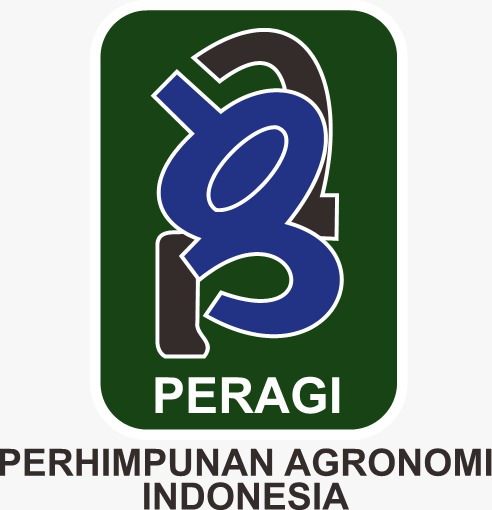Study of Some Physical Properties of Soil in Immature Oil Palm Plant at Different Slopes
Abstract
The physical properties of the soil will influence plant growth and development. This research aims to examine the physical properties of soil in various slope classes of oil palm plantations inPTPN III KebunAekNabara Utara, BilahHulu District, Labuhanbatu Regency. This research uses survey and descriptive methods by analyzing the parameters of the physical properties of the soil, namely:Bulk Density (g/cm3) Total Pore Space (%) Soil Structure, Soil Water Content (%), Soil Texture (%). The tools used are a Global Positioning System (GPS), sample ring, hoe, soil drill, penetrometer, oven, permeameter, dry sieve, wet sieve, and pressure plate apparatus. The materials used are soil samples and work maps. The research results show that several soil physical properties showBulk Density value 1.30 – 1.51 g/cm3, Total Pore Space 0.17-0.58%, water content 0.20-0.27%, while the texture is dominantly clayey, and the structure is dominantly angular blocky. The physical properties of soil require a long time to change, because the physical properties of soil are difficult to change.
Downloads
References
Baskoro, Dwi Putro Tejo, and Suria Darma Tarigan. 2007. “Soil Moisture Characteristics on Several Soil Types.” Jurnal Ilmu Tanah Dan Lingkungan 9(2):77–81. doi: 10.29244/jitl.9.2.77-81.
Hanafiah KA. 2005. Dasar-Dasar Ilmu Tanah. Jakarta: PT. Raja Grapindo Persada.
Hardjowigeno, S. 2015. Ilmu Tanah. Jakarta: akademikapresindo.
Krisnohadi, Ari. 2012. “Analisis Pengembangan Lahan Gambut Untuk Tanaman Kelapa Sawit Kabupaten Kubu Raya.” Perkebunan Dan Lahan Tropika 1(1):1. doi: 10.26418/plt.v1i1.24.
Kurnia U, Fahmuddin A, Abdurachman A, Dariah A. 2006. Sifat Fisik Dan Metode Analisisnya. Balai Besar Litbang Sumberdaya Lahan Pertanian.
Kusuma, Maritha Nilam, and Yulfiah. 2018. “Hubungan Porositas Dengan Sifat Fisik Tanah Pada Infiltration Gallery.” Prosiding Seminar Nasional Sains Dan Teknologi Terapan 43–50.
Majid. 2010. Sifat Dan Ciri Tanah. Bogor: Fakultas Pertanian. Institut pertanian Bogor.
Murniyanto, Eko. 2007. “Pengaruh Bahan Organik Terhadap Kadar Air Tanah Dan Pertumbuhan Tanaman Jagung Di Lahan Kering.” Buana Sains 7(1):51–60.
Putri, Marissa Dwi, Dwi Putro Tejo Baskoro, Suria Darma Tarigan, and Ennie Dwi Wahjunie. 2017. “Karakteristik Beberapa Sifat Tanah Oada Berbagai Posisi Lereng.” J. Il. Tan. Lingk 19(2):81–85.
Rosyidah, Elsa, and Ruslan Wirosoedarmo. 2013. “Effect of Soil Physical Properties on Saturated Hydraulic Conductivity in The 5 Land Use (A Case Study in Sumbersari Malang).” Agritech 33(3):340–45.
Sandrawati, Apong, Ade Setiawan, and Gilang Kesumah. 2016. “Pengaruh Kelas Kemiringan Lereng Dan Penggunaan Lahan Terhadap Sifat Fisik Tanah Di Kawasan Penyangga Waduk Cirata Kecamatan Cipeundeuy Kabupaten Bandung Barat.” SoilREns 14(1):6–10. doi: 10.24198/soilrens.v14i1.9268.
Juliana Epesus Simarmata, Abdul Rauf, and Benny Hidayat. 2017. “Study of Soil Physical Characteristics on Oil Palm Platation (Elaeis Guineensis Jacq.) Adolina Garden PTPN IV in Several Generation Planting.” Jurnal Ilmu Pertanian Indonesia 22(3):191–97. doi: 10.18343/jipi.22.3.191.
Sinaga, Soaloon, Vera Amelia, and Rayane D. Batubara. 2020. “The Effect of Land Use and Slopes on The Physical Properties of Land In Kurun Sub-District, Gunung Mas District.” Agrienvi 14(2):59–65.
Yulipriyanto. 2010. Biologi Tanah Dan Strategi Pengolahannya. Yogyakarta: Graha Ilmu.
Copyright (c) 2024 Resti Febriyanti, Fitra Syawal Harahap, Khairul Rizal, Ika Ayu Putri Septiyani

This work is licensed under a Creative Commons Attribution 4.0 International License.
Authors who publish with Jurnal Agronomi Tanaman Tropika (JUATIKA) agree to the following terms:
Authors retain copyright and grant the Jurnal Agronomi Tanaman Tropika (JUATIKA) right of first publication with the work simultaneously licensed under a Creative Commons Attribution License (CC BY 4.0) that allows others to share (copy and redistribute the material in any medium or format) and adapt (remix, transform, and build upon the material for any purpose, even commercially) with an acknowledgment of the work's authorship and initial publication in Jurnal Agronomi Tanaman Tropika (JUATIKA).
Authors are able to enter into separate, additional contractual arrangements for the non-exclusive distribution of the journal's published version of the work (e.g., post it to an institutional repository or publish it in a book), with an acknowledgment of its initial publication in Jurnal Agronomi Tanaman Tropika (JUATIKA). Authors are permitted and encouraged to post their work online (e.g., in institutional repositories or on their website) prior to and during the submission process, as it can lead to productive exchanges, as well as earlier and greater citation of published work.







 More Information
More Information



